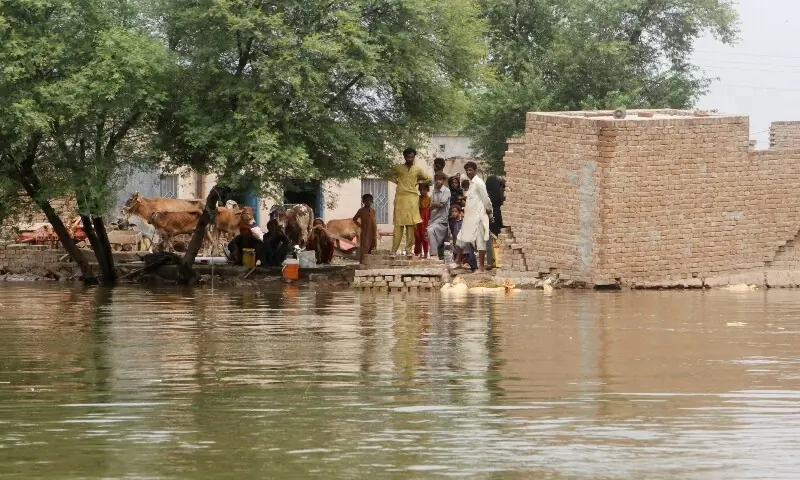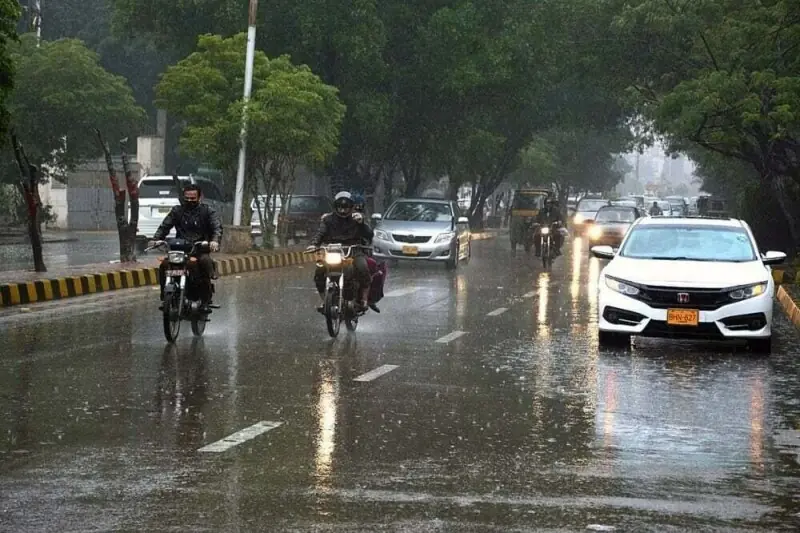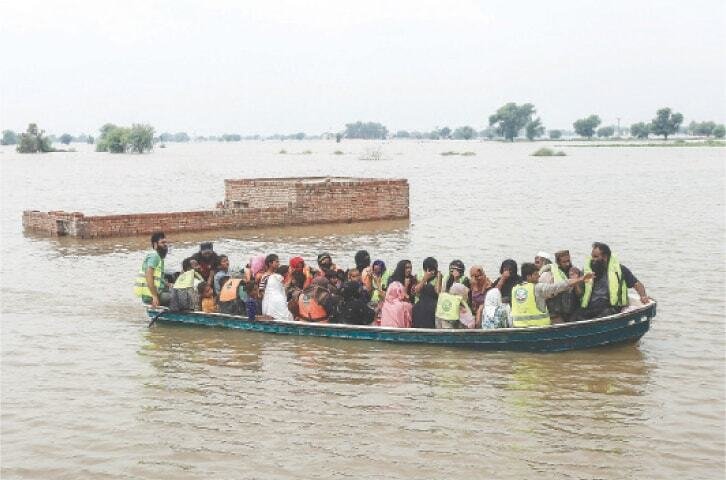Weeks of torrential rains of the monsoon have unleashed catastrophic floods throughout the country, killing more than 920 people, displacing almost two million, immersing vast sections of cultivation lands and sweeping houses, schools and cattle.
The disaster could now trigger one of the largest internal migrations in the country from the devastating floods of 2010, aid agencies and local experts warn.
“Migration has already begun in several areas since unprecedented rains and floods have not left anything for millions of people,” said Shaukat Ali Chadhar, president of the Federation of Agriculture Chambers of Pakistan. Anadolu.
Chadhar said that the current delughes have already affected around 10 million people who depend on agriculture throughout the country, mainly in Punjab.
“A multiple combination of rains and floods has affected farmers in many ways, destroying stored and permanent crops, agricultural land and cattle,” he explained, saying that he could take up to 18 months for the Earth to grow again.
“This gloomy scenario has not left any option for them but migrating to the big cities to make a living,” said Chadhar, warning that up to one million migrants could make the movement.
Climate disaster composed of human factors
The International Federation of Red Cross Societies and Red Crescent (Iffif) warned last Friday that Pakistan faced one of his worst seasons of Monzón in recent memory.
According to the National Authority for Disaster Management (NDMA), at least 922 people have been killed and 1,047 injured since the end of June, while more than 10,000 houses have been destroyed partially or completely, mainly in Punjab and Khyber Pakhtunkhwa.
At the end of August, India, also mistreated by heavy rains, opened the doors of the main dams in the rivers shared under the Treaty of the Indo waters, warning Pakistan that the releases could increase the floods downstream. Additional discharges pushed Punjab water levels even more.
For the first time in the 78 years of history of the country, three Eastern rivers, the Sutlej, Jhelum and Chenab, are simultaneously at “exceptionally” flood levels, according to local authorities.
In Gilgit-Baltistan, the sudden floods of Glacial Lake Arrebato added another layer of devastation, destroying remote valleys and destroying houses, water systems and electricity lines. These floods occur when rains or growing temperatures make mountain lakes explode, releasing water torrents and debris with little warning.
The UN says that climate change is accelerating the glacial fusion through the ranges of Himalaya and Kush Hindu, creating more unstable lakes and increasing the risk of such disasters.
“Unpredictable and intense climatic patterns, the reduction of agriculture, sea erosion, unemployment and persistent dry spells have caused a generalized migration within Pakistan in the last decade,” said Hafiz Wasi Mohammad Khan, a member of the Punjab Agriculture Research Board, said Anadolu.
“We fear that this process accelerates even more for the last floods.”
He estimated that although temporary migration will be greater, about 25 percent of displaced people could never return to their homes.
Earlier this year, the climate risk index classified Pakistan as the country most affected by climate change in 2022.
Experts also indicate vulnerabilities driven by humans, such as the monopulation of land without control and illegal constructions along the natural drainage routes, which the government has promised to address.
“Pakistan is where I was in 2010 in terms of flood management,” Khan said. “I suspect that we will discuss the same situation next year.”
Government planning ‘Mass rehabilitation package’
In 2010, more than 2 million people were displaced by floods that flooded a fifth of the country. Of these, 70pc were permanently established in large cities due to the destruction of their homes and farmland, according to the Ministry of Climate Change.
Khan warned that another wave of mass migration to the already outstanding cities would not only join their tense infrastructure but also feed crime and deepen poverty.
“A huge challenge is ahead in terms of food rehabilitation and safety. Affected families have lost everything: their homes, land, cattle and stacked actions,” he said, adding that farmers urgently need cash contributions urgently to seek seeds and other agricultural supplies.
He pointed out that many communities, especially downstream, have learned from recurring floods in the last two decades. In some cases, they even see them as opportunities, since floods can regenerate the earth and replace groundwater levels.
Chadhar requested the establishment of a “special agricultural fund” to help farmers, in addition to discarding their public service loans and invoices, saying that the government cannot handle the challenge of rehabilitation alone.
Meanwhile, Farid Abdulkadir Aiywar, head of IFRC delegation for Pakistan, urged the international community not to overlook the tragedy that develops that is “calm but relentlessly” devastating communities throughout the country.
“The crisis is far from ending,” journalists told Friday. “Whole communities remain underwater, families have lost everything and access to safe water and medical care is becoming more urgent every day.”
However, the general director of the Punjab Disaster Management Authority, Irfan Ali Kathia, minimized the possibilities of a great migration to urban centers.
“This time, there will be no massive migration for [flood-affected people] As the Government will announce a massive rehabilitation package for them, which will cover everything, from their crops and loss of land to the destruction of the home, ”Kathia told Anadolu.









